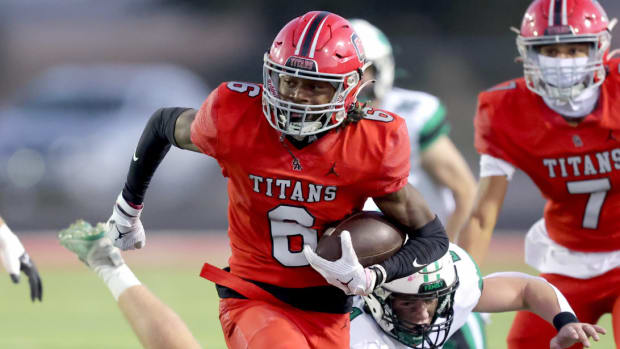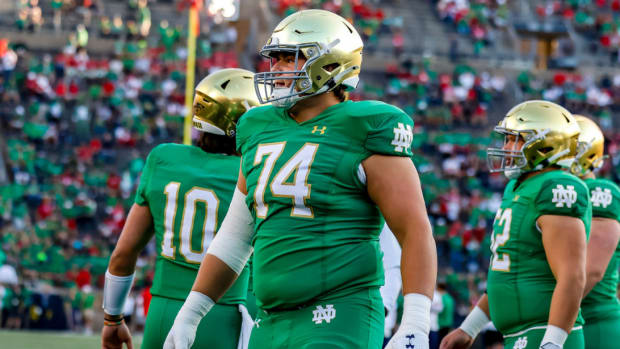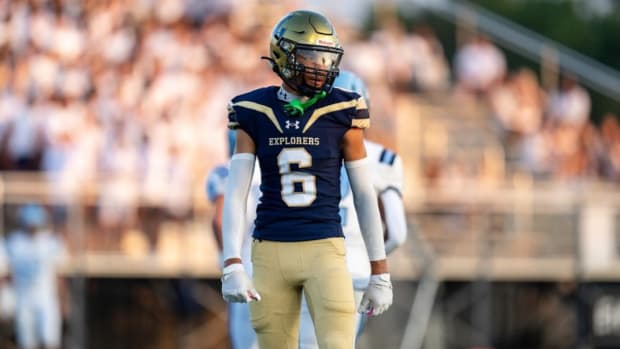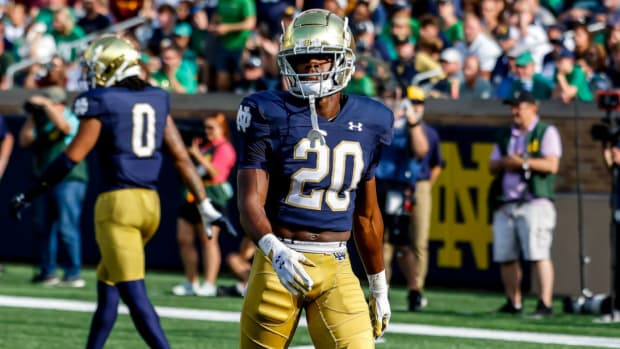Notre Dame's Special Teams Were Impactful In 2019

There is little doubt that the strength of the Notre Dame football team the last two seasons has been its defense. Despite the loss of three All-Americans and Drue Tranquill from the 2018 unit, the 2019 defense put up even better numbers against a far more challenging offensive schedule.
What gets overlooked when discussing the 2019 defense is that it had a lot of help. The Notre Dame special teams played a significant role in assisting the defense by forcing opposing offenses to travel long distances series after series.
When the defense is as good as Notre Dame’s, a strong kickoff and punt team can be a tremendous asset.
Special teams coordinator Brian Polian stepped into a situation where Notre Dame was among the worst coverage teams in the nation. In the two seasons prior to his arrival the Irish ranked 76th and 123rd in punt coverage, and 80th and 96th in kickoff coverage. On top of having a subpar defense, the Irish special teams had a bad habit of putting the defense in even worse positions.
This was never more true than in 2016, when opponents return two kickoffs and two punts for touchdowns against the Irish. Polian arrived in 2017 and has slowly had to rebuild what had been a disaster area for the program for years.
In 2019, Notre Dame’s coverage units were one of the nation’s best. In fact, Notre Dame was one of just eight Power 5 programs to rank in the Top 30 nationally in both kick coverage efficiency and punt coverage efficiency according to the Fremeau Efficiency Index, which measures field position among other things.
From a raw numbers standpoint, Notre Dame ranked 15th and 18th in punt coverage and kick coverage, respectively. Opponents averaged just 17.89 yards per kick return this season, which is by far the best mark of the Brian Kelly era. The next closest was back in 2010, when opponents averaged 19.69 yards per return. Since then the next lowest number is 22.12 yards per return (2015).
Opponents averaged 15.05 yards per punt return on 21 total returns in 2016, the year prior to Polian’s arrival, but this season opponents returned 18 punts for just 3.89 yards per return. Once again, this was by far the best mark of the Kelly era, besting the 5.33 yards per return on nine returns back in 2014.
What we saw in 2019 was a combination of multiple factors that went into Notre Dame being one of the nation’s best in coverage.
1. Improved Athleticism And Depth At Key Positions — Notre Dame has recruited the linebacker position quite well in recent seasons, and we saw the result of that on defense and special teams this season. The same is true at safety, and those two positions led the way for the Irish coverage units.
Sophomore linebacker Bo Bauer led the Irish with 13 special teams tackles. Junior rover Jeremiah Owusu-Koramoah was next with seven tackles. Safety Alohi Gilman had six tackles and the rest of the linebackers combined for nine more special teams tackles. Senior wide receiver Chase Claypool added five tackles, and both he and Gilman had crucial strips on punt returns this season.
2. Discipline — Long returns and big plays are the special teams plays that get fans excited, but from a coaching standpoint the mark of a strong special teams operation and a quality special teams coaching job is what is done in coverage. The mark of a good coverage unit is discipline, and that’s what we saw from Notre Dame in 2019.
Discipline in coverage means having a good plan of attack that fills all the lanes and is able to handle any kind of return an opponent might call, and then that plan being executed effectively. Game after game, coverage snap after coverage snap, the Irish special teams did an outstanding job in execution, which combined with the aforementioned athleticism to allow the Irish to shut down the opposition return game.
Notre Dame also avoided some of the big penalties that plagued it in previous seasons, which is another sign of a well-coached, disciplined unit.
3. Clutch Play — The special teams made three game-changing plays this season, and two played a major role in Irish victories.
With the offense sputtering against Georgia, the punt coverage unit was all over a Bulldog returner and Claypool stripped and recovered a punt, which set up Notre Dame’s first touchdown. After an early punt against Iowa State, Gilman stripped the Cyclone return man and Claypool picked it up, which gave the Irish much-needed early momentum.
Notre Dame was scuffling early against Stanford, falling behind 17-7, but a blocked punt by freshman end Isaiah Foskey gave the Irish offense the football inside the Stanford 5-yard line, which set up a score. That blocked punt gave Notre Dame all the momentum and the Irish ultimately routed the Cardinal, but without that blocked punt that game might have gone in a different direction.
4. Overcoming Personnel Losses In The Kicking Game — Notre Dame had to replace the program’s most prolific and accurate kicker (Justin Yoon) and one of its best punters (Tyler Newsome), but the transition was seamless.
Junior placekicker Jonathan Doerer was excellent, making 85-percent of his field goals, which was better than Yoon’s previous three seasons. Even more impressive, Doerer made 7-of-9 field goals beyond 40 yards, including both of his attempts over 50 yards.
Doerer also played a major role in the effectiveness of the kickoff coverage. He consistently got the ball where it needed to be, cut his kicks out of bounds in half and avoided the kickoff mistakes that plagued him and the unit as a whole the previous two seasons.
Overall it was an excellent season for Doerer.
Freshman punter Jay Bramblett didn’t come anywhere close to the yards per punt average that Newsome had the previous four seasons. Newsome was never below 43.5 yards per punt return, but Bramblett averaged just 39.4 yards per punt.
But you have to dive a bit deeper into the numbers to appreciate how effective Bramblett was as a freshman. He had his bouts of inconsistency that all first-year players go through, but overall he was quite effective. He lacked the distance power that Newsome brought to the table, but Bramblett thrived at getting height on his kicks, and the resulting hang time was a huge asset to the coverage units.
Bramblett had a net average of 37.70, which was almost identical to Newsome’s 37.74 net average in 2018, his 37.88 net average in 2017 and was better than Newsome’s 35.28 average in 2016.
Opponents returned just 18 of his 63 punts, and those 18 returns went for just 70 yards. Only two of his 20 punts inside the 20-yard line went for touchbacks. His hang time also aided in both of the forced fumbles, which both happened at the moment of the catch, which only happens with good hang time and strong coverage.
Follow me on Twitter: @CoachD178
Visit our Facebook page at: https://www.facebook.com/IrishMaven/





